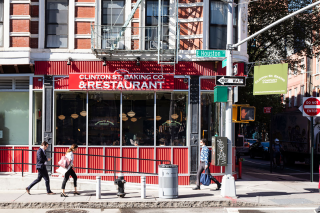We spoke with Lahman about how her studies at Simmons shaped who she is now.
What drew you to Simmons?
My parents pushed me to apply and I was eventually waitlisted with Simmons. I didn’t want an all-women’s education, but it wanted me. I’m so glad that it did! I come from a family of very strong women — my grandmother graduated medical school in 1932 — and was raised with a lot of hardcore feminism that I didn’t even know was feminism until I came to Simmons.
What did you study while at Simmons?
I designed my own course of study, approved by [then-Professor] David Browder. The title was Writing Studies: Adolescence in the Media. My major was a combination of Writing, Communications, Journalism, and Adolescent Psychology, and I was able to take a graduate course in Children’s Literature with the late Professor Susan Bloom. I also worked in the English Department, so I became close to the professors, and was co-Editor-in-Chief of [the student literary magazine] Sidelines.
While at Simmons, I had an internship at WBGH working on a public affairs teen talk show and one of our guests was an editor from Seventeen magazine. As she was leaving, I pitched myself to her in the hallway, and two days later she called my producer from New York to ask for my resume, which I had worked on diligently in my required internship class. She eventually offered me my dream job as an editorial assistant two months before graduation.
What made you pivot from magazines to restaurants?
I left Seventeen as a protest. I was writing an advice column called Relating that focused on relationship issues, and was getting lots of letters from readers about the ultra thin models on our pages and the unhealthy standards they set. I was also writing about fitness and healthful snacks, but the ads placed opposite my pages were about calorie-counting or images of anorexic-looking girls and didn’t correspond to what I was writing. I contacted Dr. Catherine Steiner-Adair when she worked at the Harvard Graduate School of Education with Carol Gilligan, studying girls’ psychological development, and eventually, eating disorders. I invited her to speak to the magazine’s staff to help educate us on ways to present better images and use more conscientious and clear language, but there still wasn’t enough change for me. Eventually I left my staff position, but they kept me on as a freelance advice columnist.
After leaving Seventeen, I volunteered at the New School cooking program, which was then located across the street from my apartment in NYC, and became certified to teach hatha yoga at the ashram down the block, where for two years I cooked a weekly vegan buffet. I also focused on writing about food and assisted the renowned author/journalist, Gail Sheehy, with research on magazine articles and books, including her biography on Hillary Clinton. Fortuitously, I helped her with preparation for the many speeches she gave around the country, which helped when, in 1997, Dr. Steiner-Adair called and asked me to give a keynote address at the National Conference for Educators on Eating Disorders at the Harvard Eating Disorders Center. My title was: Mixed Messages: Understanding and Explaining Popular Media. It all came full circle to my self-designed major!
When I met my future spouse, he had been working as a chef in New York City kitchens for almost 30 years and was about to open a small wholesale bakery and retail cafe with a partner. He was really great at the food part, but less so with the promotions and marketing. My Grandmother had left me a small sum of money, so I used it for buying out his partner and we became “married, with restaurant,” as we like to say. The eclectic menu is based on his skills and strengths, as well as what the neighborhood demands.
You’ve been selected by the James Beard Foundation to participate in their Women’s Entrepreneurial Leadership Program in partnership with Cornell University’s School of Hotel Administration. Future plans?
This is a 10-week advanced education program and I’m one of 19 entrepreneurs in the cohort. There are sessions on leadership, strategy, and financial models. I joined mostly for the colleague-ship and networking opportunities, and to learn about what other restaurateurs are leading and doing in the field.
How did Simmons prepare you to be a leader?
I often think about women’s-centered education and how attending Simmons changed my life. It allowed me to find and use my voice without apology. About 15 years ago we catered a few alumnae/i events for students to enjoy after touring local businesses in NYC. We hosted an event for Omnicom, held at Omnicom Worldwide in NYC, where Communications students met with trustee Carmen Báez ’79, ’03HD, and other alums. I met many seniors and juniors from that time, and I was blown away by how they presented themselves. They seemed like young business leaders, already. I thought, yes, that’s Simmons! I can see how self-possessed and professional Simmons women are. It makes me proud to be an alumna.

